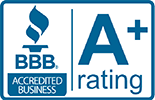- February 29, 2024
- in HVAC
- by Kyle Stewart
As the seasons subtly shift and the world outside revamps itself, your air ducts could be collecting an unwelcome cache of contaminants, surreptitiously sabotaging your indoor air quality. This invisible menace may have you sneezing, wheezing, or just feeling sluggishly subpar. Fortunately, understanding and addressing this silent adversary is simpler than you might think. Read on to learn about the seasonal culprits of air duct contamination and how regular cleaning can dramatically improve your indoor breathing experience. In the battle for better air quality, knowledge is power – let’s arm ourselves effectively.
Seasonal changes on air ducts can impact contamination by causing the buildup of dust, pet dander, and other particulates in the ducts. This accumulation can lead to poor indoor air quality and various health issues when the heating or cooling system is activated. Air duct cleaning is necessary during these times to improve indoor air quality, enhance energy efficiency, prevent health problems, extend the life of HVAC systems, and reduce unpleasant odors. Scheduling a professional cleaning before winter or during late summer and early autumn is recommended for maximum benefits.
Causes And Effects Of Seasonal Changes On Air Ducts Contamination
Air duct contamination can arise from various factors and have significant effects on indoor air quality. One common cause is the accumulation of dust, debris, and other particulates in the HVAC system over time. As air circulates through the ducts, these contaminants can settle within the ductwork, leading to a buildup that affects air quality when the heating or cooling system is in use.
Imagine your air ducts as a hidden ecosystem where dust particles, pet dander, pollen, and other airborne pollutants find their way and settle in. Over time, this accumulation can compromise the cleanliness of the air you breathe.
The effects of air duct contamination can vary depending on individual sensitivities and the concentration of pollutants. For some people, it may trigger allergies or worsen existing respiratory conditions such as asthma. Dust mites thriving in contaminated ducts pose a particular risk, as their feces can become airborne and cause allergic reactions.
Furthermore, compromised indoor air quality due to contaminated air ducts may result in discomfort and respiratory issues for individuals occupying the space. Musty odors and unpleasant smells emanating from dirt-filled ducts can also permeate into living areas, impacting overall indoor ambiance.
High-traffic areas and dust accumulation
Certain areas within a building experience higher foot traffic, leading to increased dust accumulation in air ducts. Common spaces like entrances, lobbies, hallways, or shared workspaces tend to harbor higher concentrations of dust due to continuous movement and external elements being tracked in.
Airborne particles such as dirt or pollen carried by shoes or clothing settle onto surfaces over time—some making their way into the ventilation system through open doors or windows.
The increase in dust accumulation can exacerbate issues related to poor indoor air quality. Not only does it contribute to clogging and reduced efficiency of HVAC systems, but it also introduces a higher concentration of allergens and potential irritants into the air. This can be particularly concerning for individuals with allergies or respiratory sensitivities, as they may experience discomfort or exacerbation of existing symptoms.
Consider the scenario where a public office space with heavy foot traffic doesn’t prioritize regular air duct cleaning. Over time, the accumulation of dust and debris can impact not only the overall indoor air quality but also the well-being and productivity of employees who spend extended hours in that environment.
To mitigate the effects of high-traffic areas on air duct contamination, proactive measures such as regular cleaning and maintenance are essential. Implementing entrance mats, frequent cleaning of common areas, and proper ventilation practices can all contribute to minimizing the amount of dust introduced into the building and subsequently reduce its accumulation within the air ducts.
Now that we have explored the causes and effects of air duct contamination as well as the impact of high-traffic areas on dust accumulation, let’s dive deeper into understanding the potential health risks associated with dust mites and other allergens commonly found in contaminated air ducts.
Health risks from dust mites and allergens
In our pursuit of a clean and healthy living environment, we often overlook the potential health risks lurking in our very own homes. Dust mites and allergens are among the culprits that can compromise indoor air quality and negatively impact our well-being. Dust mites, microscopic creatures found in dust, feed on dead skin cells and thrive in warm, humid environments. Their waste particles, along with other allergens like pet dander and pollen, can trigger allergic reactions and respiratory issues.
Imagine waking up every morning with a stuffy nose, itchy eyes, and frequent sneezing attacks. You may attribute these symptoms to seasonal allergies or a cold, but they could be caused by dust mite allergies. Despite their small size, these creatures can wreak havoc on your health if left unchecked.
To mitigate the risks associated with dust mites and allergens, it is crucial to maintain a regular cleaning routine and take preventative measures to reduce their presence in our homes. Dusting surfaces regularly with a damp cloth can help remove dust particles that serve as a breeding ground for these arachnids. Additionally, using vacuum cleaners equipped with HEPA filters can efficiently collect allergens rather than redistributing them into the air.
It’s also essential to keep bedding clean by laundering sheets and pillowcases frequently in hot water to kill dust mites. Encasing mattresses and pillows in allergy-proof covers can provide an added layer of protection against these microscopic pests.
Now that we understand the health risks posed by dust mites and allergens, let’s explore how seasonal changes can impact the quality of air ducts within our homes.
- The presence of dust mites and allergens in our homes can pose significant health risks, leading to allergic reactions and respiratory issues. To prevent these risks, it is important to maintain a regular cleaning routine, including dusting surfaces with a damp cloth and using vacuum cleaners with HEPA filters. Laundering bedding frequently in hot water and encasing mattresses and pillows in allergy-proof covers can also help reduce dust mite presence. Understanding the impact of seasonal changes on indoor air quality is crucial for maintaining a clean and healthy living environment.
Influence Of Seasonal Changes On Air Duct Quality
As the seasons change, so do the conditions surrounding our homes. These shifts in temperature and humidity can have a direct impact on the quality of air ducts, which play a vital role in ensuring proper airflow and ventilation throughout our living spaces.
During the winter months, when we keep our windows closed and rely on heating systems to stay warm, the lack of fresh air circulation can lead to a buildup of allergens and pollutants within our homes. This stagnation, combined with low humidity levels, provides an ideal breeding ground for mold and mildew. These growths can then spread through the air ducts, posing health risks and compromising indoor air quality.
Conversely, in the summer months when we open our windows for fresh air, we unintentionally invite outdoor allergens like pollen into our homes. As these particles enter the air ducts and circulate through the HVAC system, they can exacerbate allergic reactions and respiratory issues for individuals prone to such sensitivities.
Think of the air ducts as the respiratory system of your home. Just like how our lungs need clean air to function optimally, so do these ducts require regular maintenance and care to ensure healthy airflow throughout our living spaces.
Regular air duct cleaning and maintenance become imperative in managing the effects of seasonal changes on indoor air quality. By scheduling professional inspections and cleanings, homeowners can address potential issues such as mold growth, excessive dust accumulation, or vermin infestations that may compromise the efficiency and cleanliness of their air duct system.
- According to the US Department of Energy, 20-30% of the air moving through a home’s duct system can be lost due to leaks, holes, and poor connections, with this loss potentially exacerbated during periods of high usage, such as during winter or summer extremes.
- The Environmental Protection Agency (EPA) states that levels of airborne pollutants indoors maybe 2-5 times higher than outdoor levels – an issue that becomes more pronounced in heating seasons when windows are sealed shut.
- The National Air Duct Cleaners Association reports that up to 40 pounds of dust can be created annually in a typical six-bedroom home. Higher levels are expected to accumulate during seasonal changes when people spend more time indoors.
How seasonal shifts affect HVAC efficiency
As the seasons change, so does the workload of our HVAC systems. During the hot summer months, air conditioning is used to keep our homes cool and comfortable. On the other hand, during the colder winter months, heating systems are relied upon to provide warmth. These shifts in temperature and usage can have a significant impact on the efficiency of our HVAC systems.
Imagine a scorching summer day when your air conditioner is working overtime to combat the heat. If your air ducts are clogged with dust and debris, it can restrict airflow and put additional strain on your system, causing it to work harder and use more energy to achieve the desired temperature.
During the transition between seasons, it’s important to ensure that your HVAC system is functioning optimally. Cleaning your air ducts plays a vital role in this process.
Now that we’ve discussed how seasonal shifts affect HVAC efficiency, let’s explore the importance and benefits of regular air duct cleaning.
The Importance And Benefits Of Regular Air Duct Cleaning
Air duct cleaning is not only crucial for maintaining indoor air quality but also for improving energy efficiency in your home. Over time, dust, pet dander, allergens, mold spores, and other contaminants can accumulate within your air ducts. These pollutants can negatively impact the quality of the air you breathe indoors and hinder the overall performance of your HVAC system.
Regular air duct cleaning can help remove these contaminants from your system, allowing clean and fresh air to circulate throughout your home. By eliminating dust and debris buildup in your air ducts, you not only enhance indoor air quality but also promote better respiratory health for you and your family.
Furthermore, clean air ducts contribute to improved energy efficiency. When dust and debris accumulate within your HVAC system, it can obstruct airflow and force the system to work harder to maintain desired temperatures. This increased workload results in higher energy consumption and ultimately drives up your utility bills.
By investing in regular air duct cleaning, you can help your HVAC system operate at its full potential, optimizing energy efficiency and potentially reducing your energy costs. Additionally, removing dust and debris from your air ducts can extend the lifespan of your HVAC system, saving you money on repairs or premature replacements.
For instance, imagine having your air ducts cleaned before the start of the winter season. With improved airflow and reduced strain on your heating system, you may notice more consistent warmth throughout your home while potentially lowering your monthly heating bills.
Now that we understand the importance and benefits of regular air duct cleaning, let’s explore how it can significantly improve indoor air quality and contribute to overall energy efficiency.
Indoor air quality improvement and energy efficiency
When it comes to the air we breathe indoors, both our health and comfort are at stake. Poor indoor air quality can lead to a range of respiratory illnesses, allergies, and discomfort. Additionally, inefficient heating and cooling systems can have a significant impact on our energy bills. Therefore, it is essential to prioritize both indoor air quality improvement and energy efficiency when it comes to maintaining our air ducts.
Now that we understand the importance of indoor air quality improvement and energy efficiency, let’s explore the guidelines for optimized air duct maintenance across seasons.
Guideline For Optimized Air Duct Maintenance Across Seasons
Proper maintenance of air ducts is vital to ensure optimal performance and prolong the lifespan of your HVAC system. It also plays a crucial role in maintaining healthy indoor air quality throughout the year. By following this guideline for optimized air duct maintenance across seasons, you can keep your system running efficiently and provide clean, fresh air for your home or office space.
First and foremost, it’s important to schedule regular air duct cleaning. Over time, dust, dirt, pet dander, and other contaminants can accumulate in the ductwork, leading to poor indoor air quality. By hiring a professional service or using appropriate tools for DIY cleaning, you can effectively remove these pollutants from your system.
Imagine opening up your air ducts after a long winter and discovering layers of debris accumulated over time. Without proper cleaning, this buildup can circulate throughout your space with each breath you take.
Another vital step in optimized air duct maintenance is filter replacement. Air filters help trap particles before they enter your HVAC system. Over time, they become clogged with dirt and debris and lose their effectiveness. Regularly changing your filters contributes to better airflow, improved indoor air quality, and increased energy efficiency.
In addition, sealing any leaks in your air ducts is crucial. Leaks can significantly impact the efficiency of your system, causing warm or cool air to escape into areas that don’t need it. By identifying and sealing these leaks, you can prevent energy wastage and ensure that conditioned air reaches its intended destination.
Lastly, scheduling professional HVAC maintenance on a regular basis is essential for optimizing air duct performance and improving energy efficiency. Trained technicians can inspect your system, clean components, check for any potential issues, and ensure everything is operating at its best.
Now that we have explored the guidelines for optimized air duct maintenance across seasons, let’s move forward with implementing these practices to enjoy clean indoor air and energy savings.






